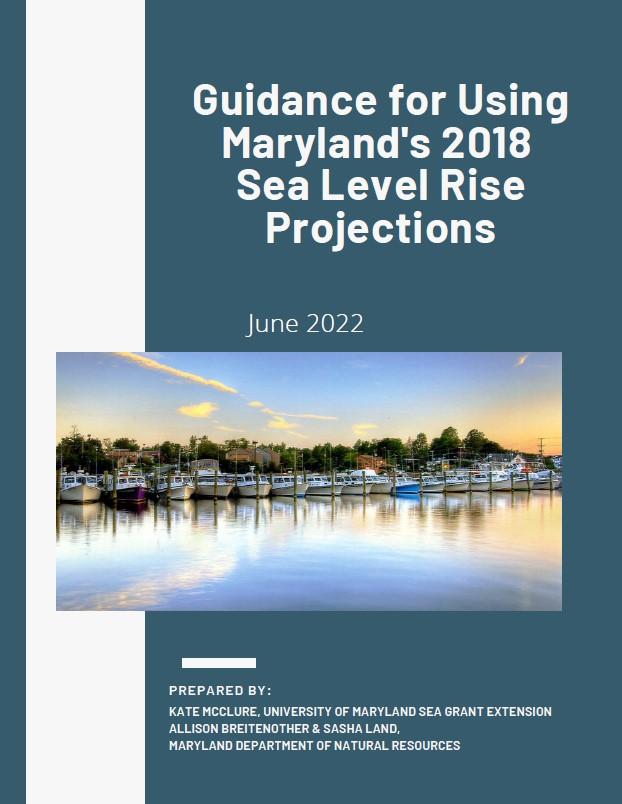Incorporating sea level rise projections into projects can help increase resilience to future conditions. Guidance for Using Maryland’s 2018 Sea Level Rise Projections provides a step-by-step approach for selecting sea level rise estimates based on the report Sea-Level Rise Projections for Maryland 2018 to use in planning, regulatory, or site-specific projects.
Guidance for Using Maryland’s 2018 Sea Level Rise Projections
How was this guidance created?
This guidance document was prepared by Maryland Sea Grant Extension and Maryland Department of Natural Resources staff. It is based on similar reports produced by other states, including New Hampshire, Washington, and California. The document represents the perspectives of an advisory group composed of individuals from local, state, and federal government, NGOs, the private sector, and academic institutions with expertise in using sea level rise projections. It also includes feedback from over 30 additional reviewers.
Who should use this GUIDANCE document? What will it help me do?
This guidance document is intended for decision-makers involved with planning, regulatory, or site-specific projects in Maryland’s 16 coastal counties, Baltimore City, and municipalities within the coastal zone. Potential users could include government staff, professional consultants, coastal residents, and other stakeholders involved with projects that need to consider sea level rise.
This guidance document will help you select a sea level rise estimate based on Maryland’s 2018 sea level rise report from the University of Maryland Center for Environmental Science (UMCES) to incorporate into a project. It also provides guiding principles to consider when planning for sea level rise and highlights examples of how sea level rise could be applied in projects.
Why do I need to select a sea level estimate for my project? Why can’t someone just tell me what number to use?
Planning for sea level rise is not a one-size-fits-all situation. For example, a project that has a longer timeframe and is highly sensitive to flooding should plan for a greater amount of sea level rise than a project that has a shorter timeframe and can be easily adapted. This guidance document provides a step-by-step process to help you select an appropriate sea level rise estimate based on your project’s characteristics and your tolerance for flood risk.
What if I have questions or need help?
Please contact Kate McClure (Maryland Sea Grant Extension Coastal Climate Specialist, mcclure@umd.edu, 443-446-4263) with any questions. We are happy to provide assistance on using this guidance document. We are also available to discuss next steps for your project after you have selected a sea level rise estimate.
